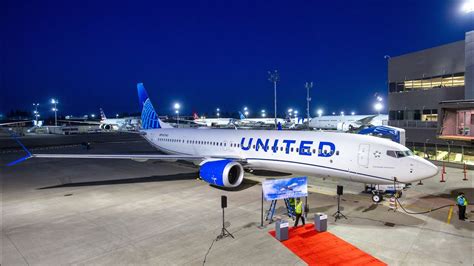There are signs that Boeing has been making significant progress with 787 production and deliveries. We took a look at publicly available data and extrapolated that data to develop the following chart comparing orders and production rates. Examining the order history provides a few years of data on which to base projections. If Boeing continues to sell the 787 at or near historic rates, we see total program orders approaching 1,800, including all three models, by 2020. Deliveries started slowly, but have accelerated. Assuming that Boeing’s production plan for the two factories can be met, Boeing will begin to close the large gap between orders and deliveries as we approach the end of the decade, and still have a significant backlog.
One might consider the production acceleration to be too rapid, but bear in mind that Boeing needs to recover its considerable investment in the development of the 787, which includes horrendous cost overruns. The incentive to produce aircraft faster generates cash flow even as they are in a dog-fight with Airbus for every future sale in the segment. Delivery slot availability is a powerful marketing tool. If sales do not reach or exceed the blue dashed line, Boeing can dial down production as needed.
We anticipate -9 and -10 sales to accelerate, with fewer orders for the -8 and believe sales will be within 10-15% of the curve. The key to whether it will be above or below the line is how Airbus competes with the A330neo and prices the aircraft. Airbus has made it clear the A330neo’s role is to spoil 787-8 sales. The incentive to push 168 787s out the factory per year is compelling – as there is nothing as comforting as positive cash flow – but sales must be made at profitable prices. Boeing has not yet amortized the development costs of the 787, as Airbus has with the A330, with modest neo development costs. As a result, Airbus has tremendous flexibility in discounting the A330neo to price levels that dramatically reduce Boeing’s margins. Pricing strategies will drive orders one direction or the other in this segment.
 Production costs are coming down
Production costs are coming down
With any new aircraft, there is a significant learning curve. With the 787, introducing new technologies and new manufacturing techniques, that curve was steeper than for typical new aircraft. The initial impact of significant traveled work and delays likely resulted in the first 787 deliveries being sold at big losses. But Boeing appears to be working its way down the learning curve on 787 production. The following chart illustrates how the number of days in final assembly have declined.
Based on the data we have, the 787s built in Charleston this year are down to an average of 56 days while Everett takes about 40 days in final assembly. Company wide, the 787 in 2014, on average, needed 45 days in final assembly. By comparison, a 777 takes 49 days from start to being pushed out the factory door.
We anticipate 787 production times to continue improving and production to accelerate according to Boeing’s plan, in particular Charleston catching up with Everett. The supply chain is becoming less stressed and now has a rhythm. Boeing’s plan to increase production appears achievable.
Moreover, Boeing wants the line stable to ensure they can keep moving towards increasing unit profitability. The quicker they deliver 787s the better, because the company will soon need to fund the 777-X implementation as well as a 737/757 replacements to combat the increasing success of the A321neo against the over-matched 737-900ER and -9MAX.
The Bottom Line
The trauma of the 787 entry into service and initial production glitches appear to be coming to an end. While much later than planned, Boeing’s operational efficiency in producing the 787 appears to have reached stability in Everett at efficient levels, and Charleston, while not there yet, is rapidly moving down the learning curve.
We expect, once Charleston equals the 40 days Everett production rate, that the 787 program will be stable and profitable. While this is five years behind schedule and resulted in delaying a new narrow-body that would have improved competitive position against Airbus, it is welcome relief in Seattle.
Views: 136





might I suggest a companion piece published by SPEEA regarding cost curves comparison
http://www.speea.org/publications/files/Archive_Spotlite/Spotlite_2014/Spotlite_2014_November.pdf
page 9
Problem solving – what works?
By Stan Sorscher
SPEEA Labor Rep
starts …
Boeing faces at least three separate billion-dollar
challenges in its commercial airplane business:
• Market challenge for 737 MAX
• Getting to profitability on the
787 program
• The 777 “bridge” problem
Great study, there is no doubt Boeing with its background and experience will be able to make it. What happened in the early days of B787 program should not be repeated.
I am sure Boeing will soon be able to reach its target in learning time, introducing the same product days after days will assist in increasing workers knowledge, increasing their understanding to the product and increasing their productivity.
All these things will assist Boeing to decrease production time, production cost, absorb R & D expenses and making profit. Hence, Boeing will be able to reach the break even point very soon and far before reaching plane number 600.
I am only afraid from 2 main things:
1 – Workers strikes which may kill the project as a whole if it happens again,
2 – Boeing to keep on squeezing their worker till they start making mistakes. and that should not happened.
I am full of confidence that Boeing has the caliber and judgement hence Boeing will be able to introduce more production facilities / lines on time instead of squeezing their workers.
The 787 is the most innovative commercial airliner since the 707, so it is not surprising that it had more than its share of development issues and delays. On the other hand, all that innovation has led to the fastest order rate of any widebody to 1,000+ aircraft and beyond. The 3 models seem perfectly positioned under the 777X. The 787-8 and -9 have almost equal numbers of orders, and the -10 will undoubtedly join them once it is closer to delivery and the backlog is worked down.
Boeing’s 2 big problems with the 787 at this point are profitability and inability to produce enough aircraft to keep the backlog at a reasonable level. Since the 3 787 models are great replacements for the huge inventory of 767’s, A330’s, and 777-200’s, in addition to growing the world air fleet, Boeing should increase production to 20/month to avoid losing orders by default to the inferior A330. It should easily top 2,000 sales in a few years if they can increase production to meet demand.
The International Institute for Strategic Leadership has been tracking the 787 learning curves generated from Boeing’s quarterly financial reports since 2009. The question is not when but if the airplane programme will break even during it’s production run of 3,000 to 4,000 airplanes. a detailed analysis can be found here:
http://ii-sl.org/ii-sl/Learning_Curves_in_MPM.html
well said Nick
One issue with the IISL study is that it seems to assume that average selling price per 787 is $100 million forever. While list prices are usually heavily discounted, the list prices for 787”s range from $218 million to $298 million, so the study sales price assumption seems quite low. If average sales prices are raised to $150 million, according to the IISL analysis the program begins to make a profit on an incremental basis at around 500 aircraft. Since the 787-9 and -10 models will probably form the majority of sales going forward, even $150 million per aircraft may be low. Regardless, the study assumption of a flat $100 million in revenue per plane doesn’t seem plausible unless I have missed something.
Nick great question, one that we built into the multiple iterations to the model. The reason that $100 million is the correct number instead of $150 million because when we modeled the $150 million revenue per airplane the total inventory costs came to well less than the $25.2 billion ($16 Billion) that was announced in Boeing’s 3rd quarter financial results. We will continue to evaluate and adjust with each quarters results.
For further reading I’d suggest you read an old but still relevant flightblogger post:
http://www.flightglobal.com/blogs/flightblogger/2010/12/the_price_of_boeings_787_sales/
Using the BA 3rd quarter inventory costs – IMO- may be misleading. The problem is that very few outsiders know just what BA is able to include, defer or get tax preferences re ‘ costs’. And just what PV FV values are baked in via significant financial engineering issues involved in ‘ program’ accounting.
For but one example- BA just donated to Local Museum of Flight one early flight test 787. Its ” cost” no doubt was several hundred million – and may be worth bucu $$ as a tax writeoff- instead of simply being scrapped. Even though learning curves come down by a ratio of 10 to 15 compared to number one , the net local – assembly ( touch ) labor is rarely over 15 percent early on , and may come down to 10 percent. So called research costs have tax advantages, eetc.
And add in the 15 to 50 percent less than ‘list’ price on sale, the tax breaks a function of delivery location ( out over the ocean or in an adjoining state, and unless one is privy to such details, an external analysis ism most likely to have a significant variance. BA claims/states a ‘ program cost “of around 1500 planes to reach ‘ breakeven’- but the factors used are always very secret.
Even so , your analysis suggesting the true- real ‘ breakeven” numbers being much greater than BA PR-financial numbers is a reasonable attempt at finding out what is really behind the curtain.